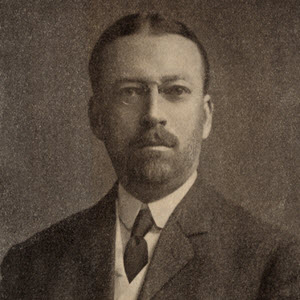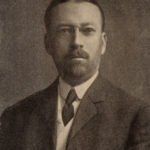
Leighton Calkins (2021)
About Leighton Calkins (2021)
When your $2 Nassau comes down to the final green, or you pick up your scorecard for the Met Net and see those lovely black dots indicating where you get your strokes, gjve a word of thanks to Leighton Calkins, who devised the handicap system behind the method still used today.
Calkins, who was born in Buffalo, N.Y., attended Harvard Law School and with a classmate co-founded the Manhattan firm of Bard & Calkins, with a practice in corporate and estate law. He was the mayor of Plainfield, N.J., from 1915 to 1920, and president of the New Jersey State League of Municipalities. Especially in the years prior to his becoming mayor, Calkins was active in golf administration, serving as an officer of the MGA, the New Jersey State Golf Association, and the USGA.
He devised the handicapping system first at Plainfield Country Club, then for the NJSGA and the MGA as chair of the Handicapping Committee for each. It was based on the British model of taking a player’s three best scores for the year and averaging them; until adoption of the World Handicap System in 2020, most British and Irish clubs still used the three-best method, only including scores made in competitions. In the general British system, each player’s handicap was determined in comparison to the club’s best player, who was labeled as scratch; the Ladies Golf Union came up with a par rating for each course based on the length of its holes, and used that as the baseline, a more useful method of comparing golfers from different clubs.
The system Calkins presented was similar to the LGU’s formulation in creating a par value based on length, with minor modifications for aspects of difficulty (these were not specified and not remotely as complex as in today’s Course Rating system). Through experimentation at Plainfield, Calkins refined and demonstrated the workability of his system, which he presented in an article in Golf in 1904. In taking the three best scores, it represented a player’s potential rather than his current form; this factor favored the better players, since they more frequently play close to their potential than high-handicappers, and they have a much smaller dispersion of scores. Strokes were awarded on a sliding scale, given less generously as the difference between a player’s scores and par increased. As Calkins wrote, “If an allowance of a certain number of strokes is to be made to the less skillful player because he can not play as well, some allowance ought to be made to the more skillful player because he can not improve as much.”
Calkins’s method addressed what many saw as a flaw in other handicapping schemes: In net events with a sizable field, low-handicap players won less often than expected, because while they’d be almost certain to defeat any one player, when facing 40 double-digit players there was a good chance one of them might have an anomalously great day and finish first. The adjustments Calkins introduced allowed the better players to win more often, in proportion with expected results.
Calkins advocated strongly for a uniform mode of handicapping to replace the prevailing club-by-club crazy quilt. The MGA adopted Calkins’s system in 1905; the USGA followed suit six years later. Calkins served on the latter organization’s Executive Board, and he performed an additional vital service by proposing changes to the USGA constitution in 1910 that recognized
the growth of golf in America west of the Mississippi and ensured the concerns of non-Eastern clubs and golfers would be heard and considered. The revision helped lay the groundwork for the USGA to become a truly national organization in reach and scope.
He proposed in 1912 that rather than using self-assigned pars or a strict distance standard, courses should take as their base rating the expected score of Jerome Travers, then a three-time winner of the U.S. Amateur and New Jersey Amateur and four-time winner of the Met Am (Travers would add to those totals by winning all three in 1913). This notion that a rating for handicap purposes could and should differ from par is the essence of the USGA Course Rating system. The USGA, however, permitted each club to determine its rating, a practice Calkins blasted as “useless.” In time, the USGA came to agree with him, and placed responsibility for such ratings in the hands of the local or regional golf association.
Also in 1912, he was the driving force behind creation of the Met Junior Championship, the first of its kind in the region. The first three were held at Plainfield CC and limited to boys not yet nineteen; club members provided lodging for any players who came out a day ahead for a practice round. Its goal, then as now, was to promote youth involvement in golf; today it’s the oldest such championship in the country.
Calkins increasingly turned his attention to public life in Plainfield, and to his law practice in Manhattan. He retired in 1938, and passed away in 1955 at age 87. The principles behind his handicapping method, and the junior event he spearheaded, are a living tribute to his vision of the game in the Met Area and beyond.
Connection to the MGA. . .
Father of the Handicapping System…
Leighton Calkins devised a handicapping system for Plainfield Country Club, where he was a member, and developed the system adopted by the MGA in 1905 while he led the MGA’s Handicapping Committee.
In 1911, the USGA adopted a version of the system, which has morphed into what all golfers use today.
ADDITIONAL DETAILS & MULTIMEDIA
Life Events
- Date of Birth: 1867
- Date of Death: 1956
- Hometown: Plainfield, N.J.
Achievements
- A proponent of junior golf, he founded the Met Junior Championship in 1912, now the nation’s oldest junior championship
- Chair of the MGA’s Handicapping Committee and a member of the Executive Committee
- Devised the handicap system behind the method still used today.
- Mayor of Plainfield from 1915 to 1920
- Handicapping chair for the NJSGA and member of the USGA Executive Committee

